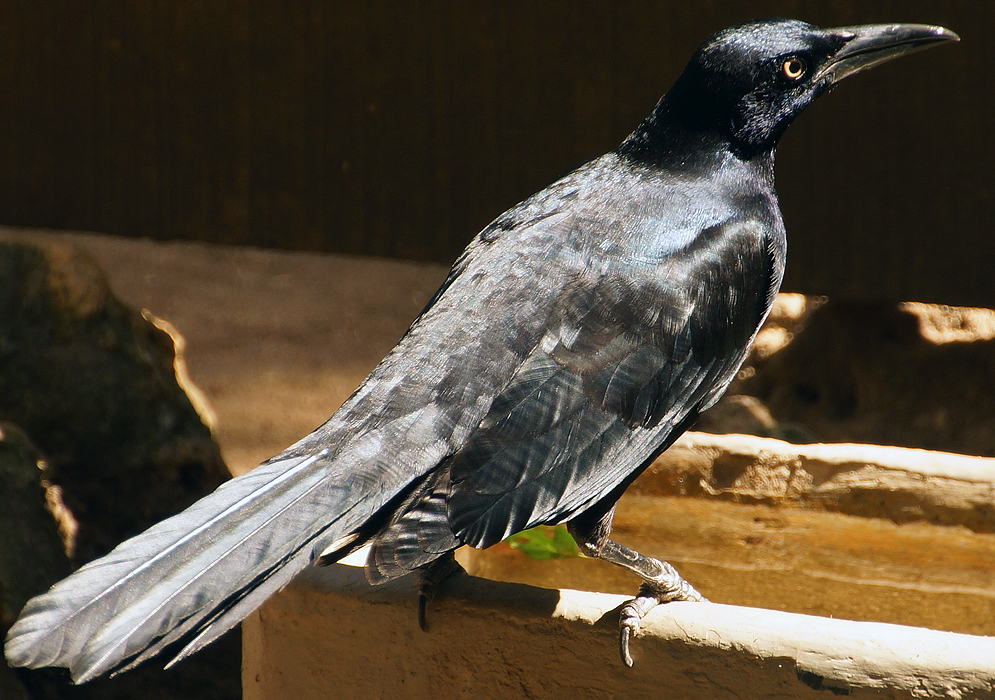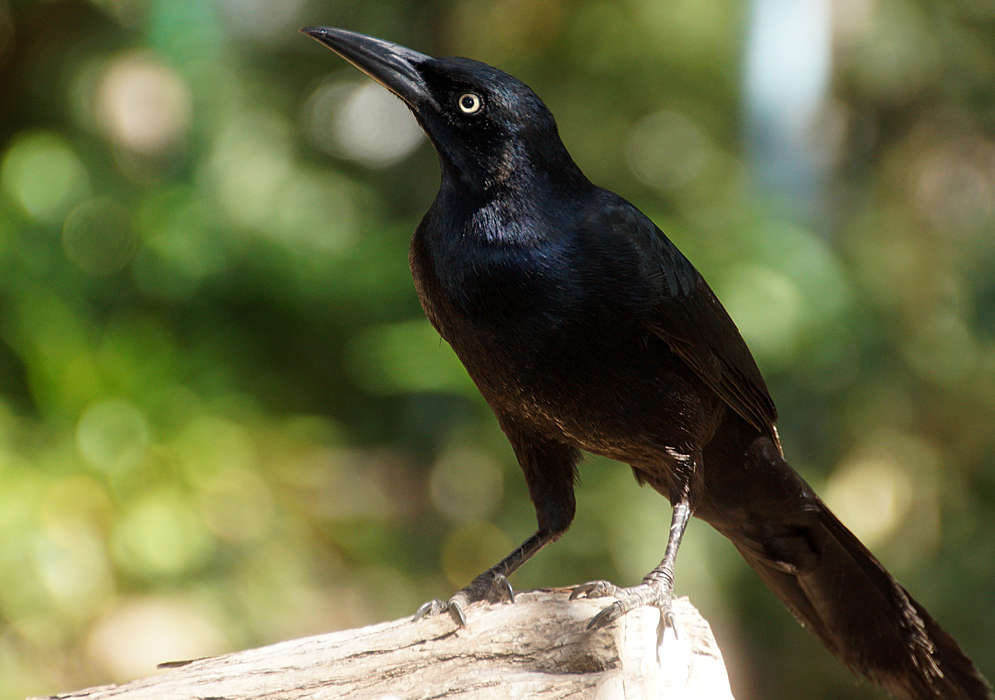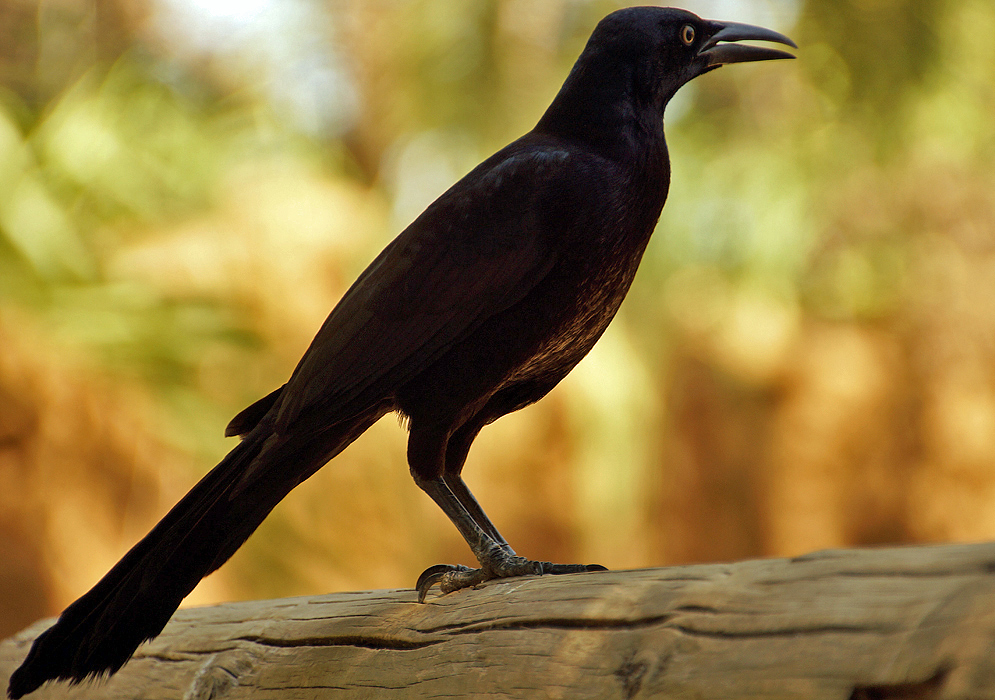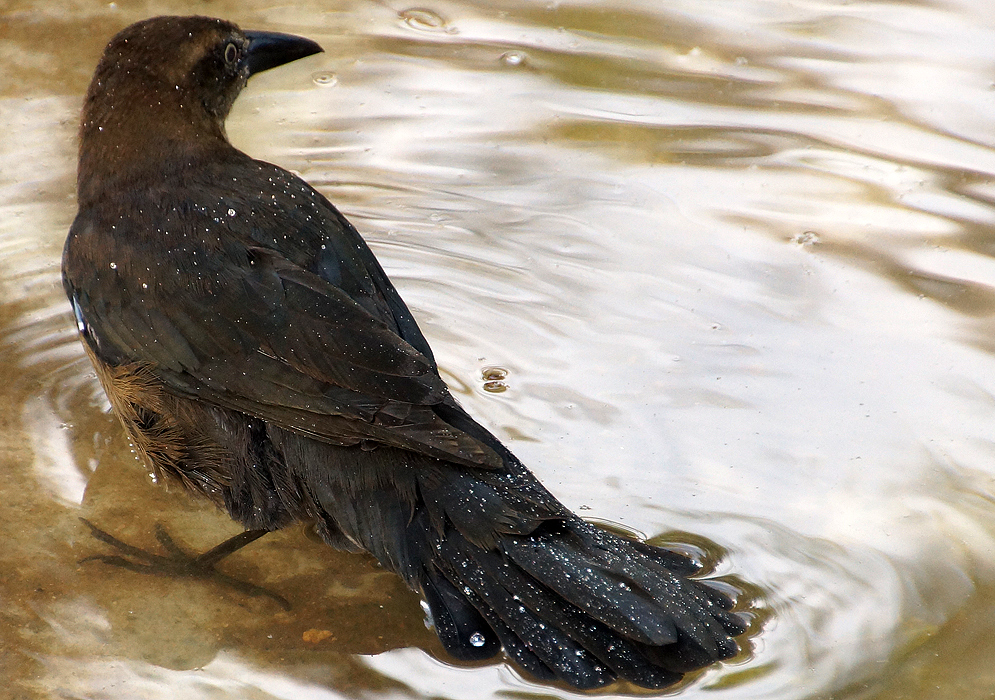This post has 11 Simple Fields-fields attached. Show fields.

The Great-tailed Grackle is a medium-sized passerine bird native to North and South America. The bird's historical introduction by the Aztecs in Mexico for its iridescent feathers has led to a significant range expansion over time. Their current habitats span from northwestern Venezuela and western Colombia and Ecuador in South America, stretching north to Minnesota, Oregon, Idaho, California, and Florida in North America, with occasional sightings in southern Canada. These habitats include clear ground areas such as pastures, wetlands, mangroves, chaparral, and even agricultural and urban settings. Physically, Great-tailed Grackles are notably sized between starlings and crows, with lengths ranging from 15 to 18 inches and wingspans between 18.9 and 22.8 inches. Males, heavier than females, weigh between 7.2 and 9.3 ounces, while females range from 4.1 to 5.0 ounces. Males display iridescent black plumage with a purple-blue sheen on their head and upper body, and both sexes have bright yellow eyes (juveniles exhibit brown eyes and plumage). These birds are also distinguished by their keel-shaped tail, which adult males can fold vertically.
Their vocalizations are diverse, ranging from sweet, tinkling notes to sounds akin to a rusty gate hinge. The loud nature of these vocalizations sometimes categorizes them as pests. During mating season, which typically starts in early or mid-April, females lay 4 to 7 eggs in nests built near the top of large or medium-sized trees. These nests incorporate both natural and man-made materials. The eggs, colored bright blue to pale bluish gray with dark brown to black markings, hatch in about 13 to 14 days, with the fledglings leaving the nest 12 to 17 days later. Parents continue to feed them for several weeks post-fledging. The species exhibits diverse foraging habits, feeding on a wide range of foods, including insects, lizards, nestlings, eggs, fruits like bananas and berries, and grains such as maize. They turn over objects to search for food, wade into shallow water for fish, and even catch them by flying close to the water's surface. In urban settings, they have been observed picking dead insects off car license plates and congregating near food sources like food trucks and grocery store parking lots. The Great-tailed Grackles exhibit three mating strategies: territorial, residential, and transient. Territorial males, heavier and with longer tails, tend to have more offspring. The species has also shown the ability to solve complex problems, such as "The Crow and the Pitcher" puzzle, and demonstrates behavioral flexibility in adapting to changes in cognitive tasks. The Great-tailed Grackle is classified as "Least Concern" by the IUCN, with a global population size of approximately 30 million individuals. Photographed in Barranquilla, Colombia.











